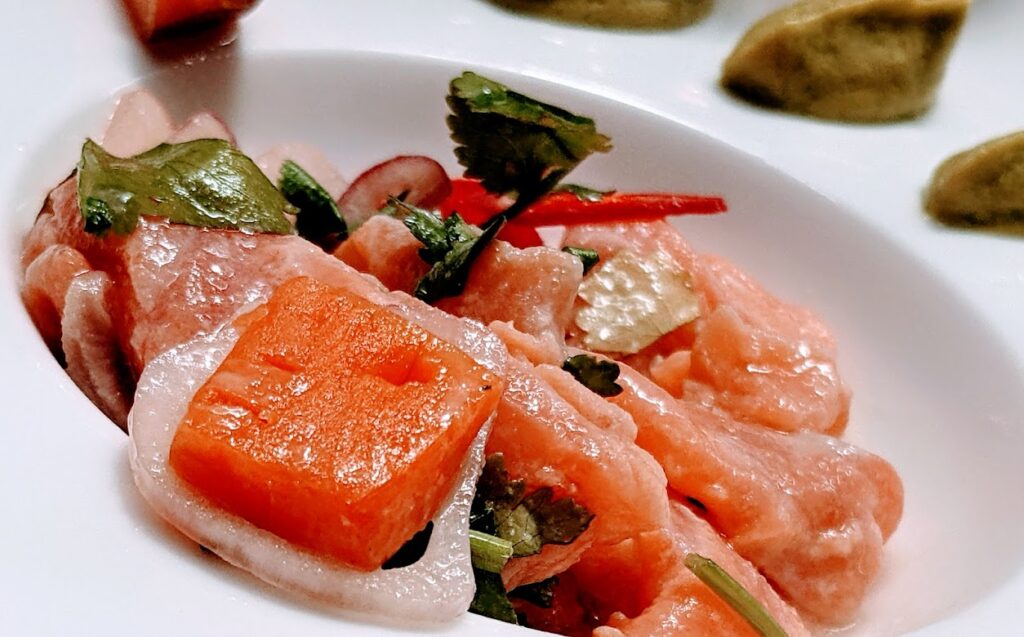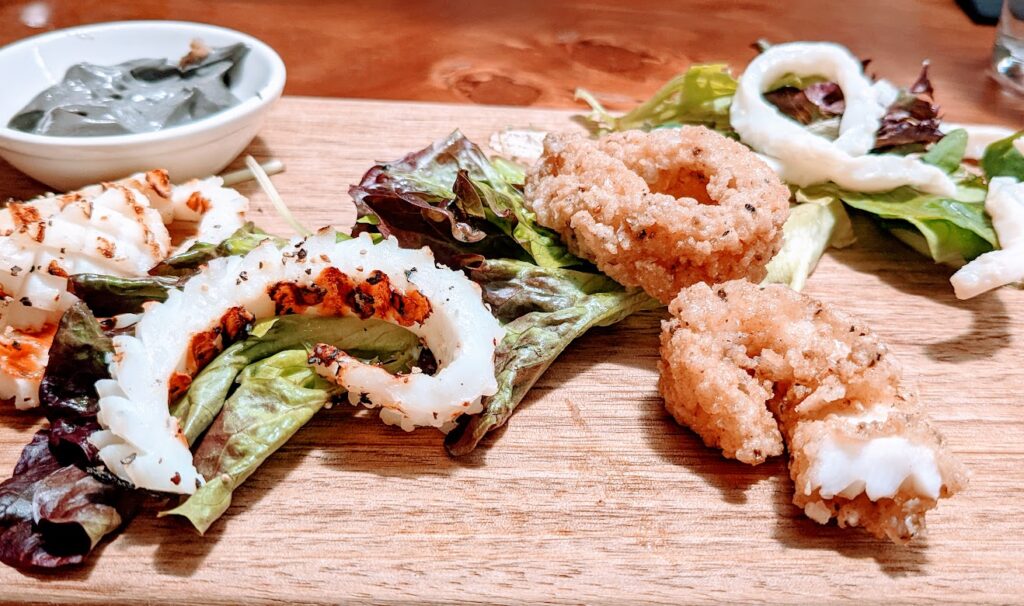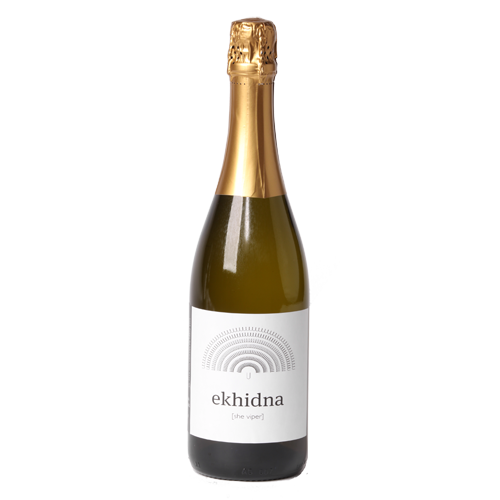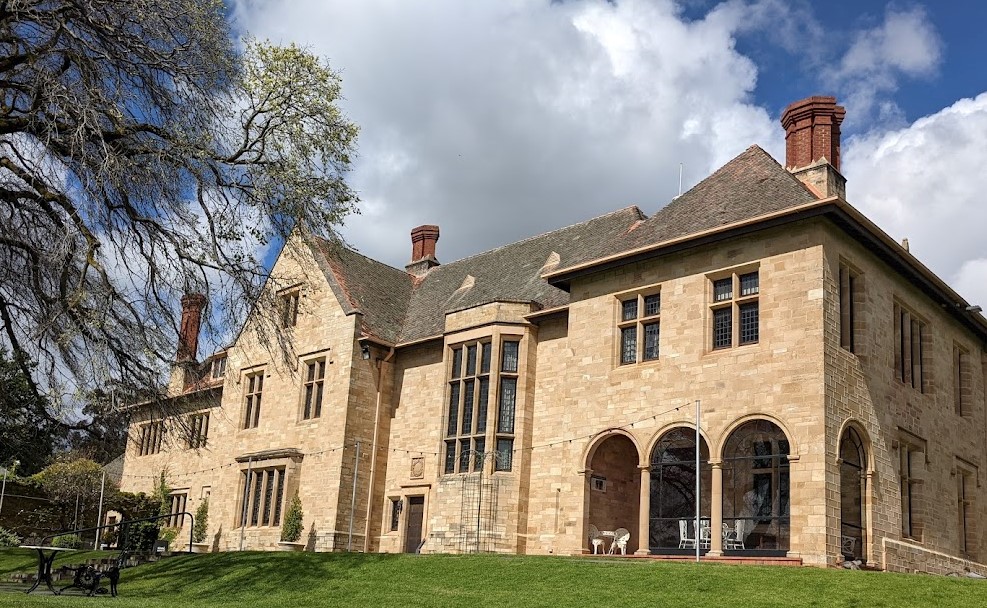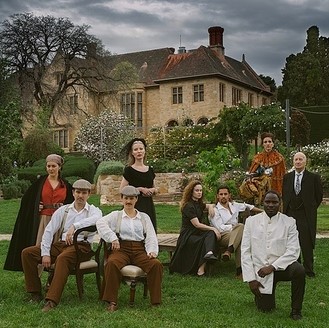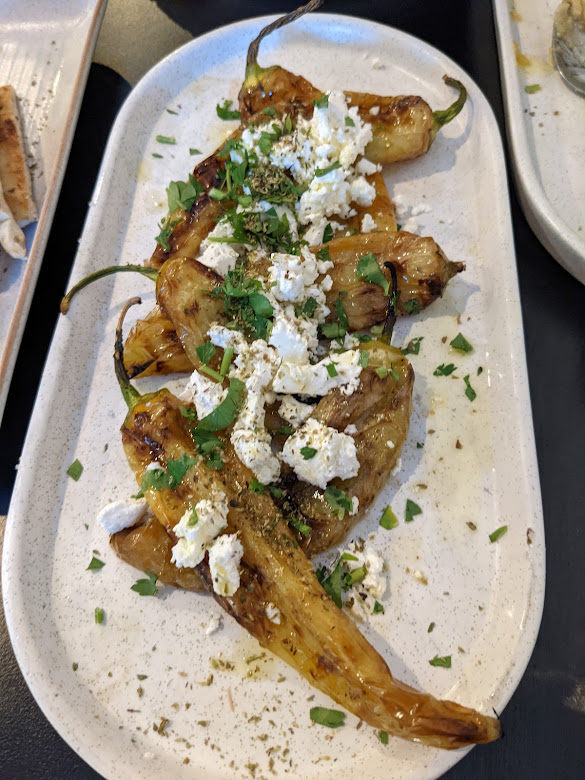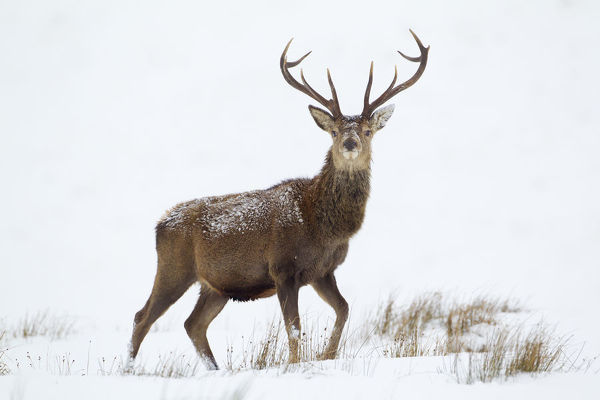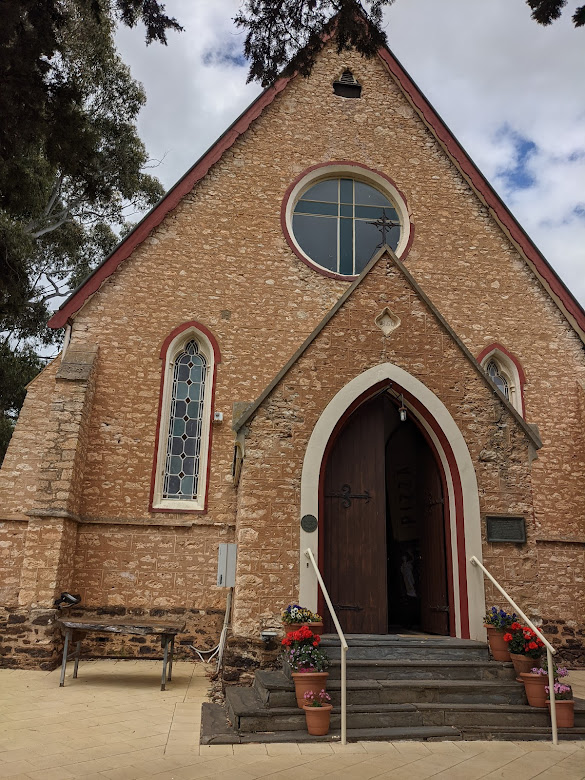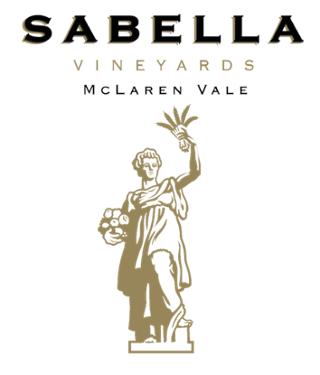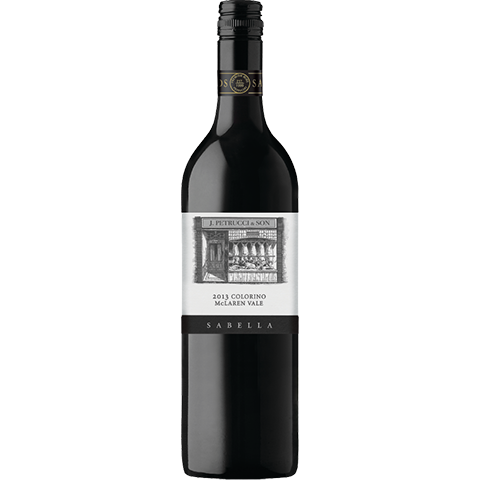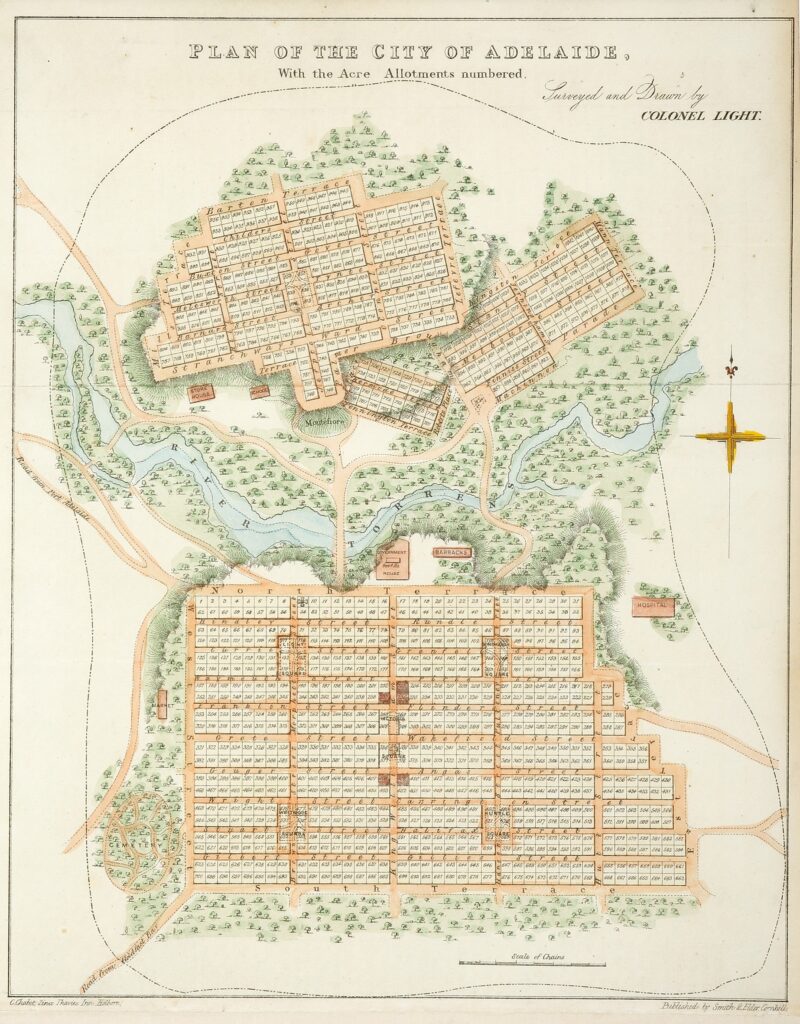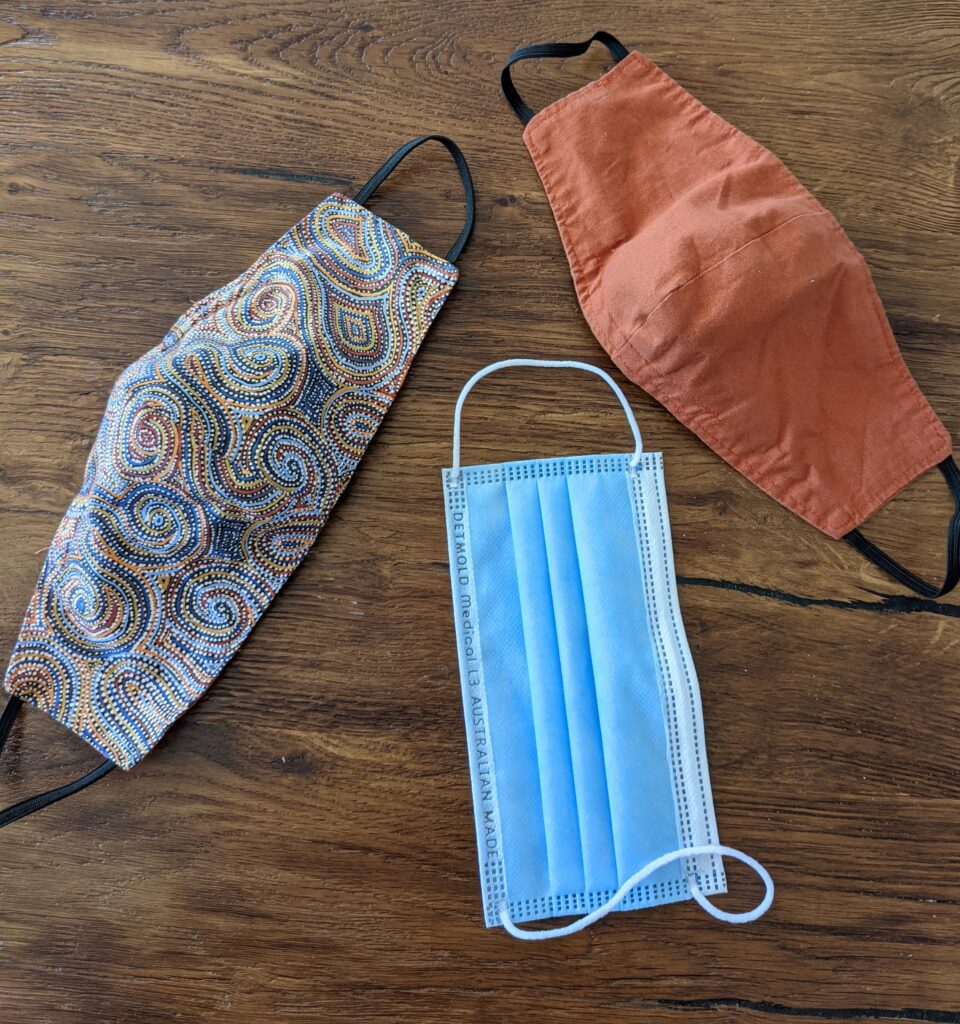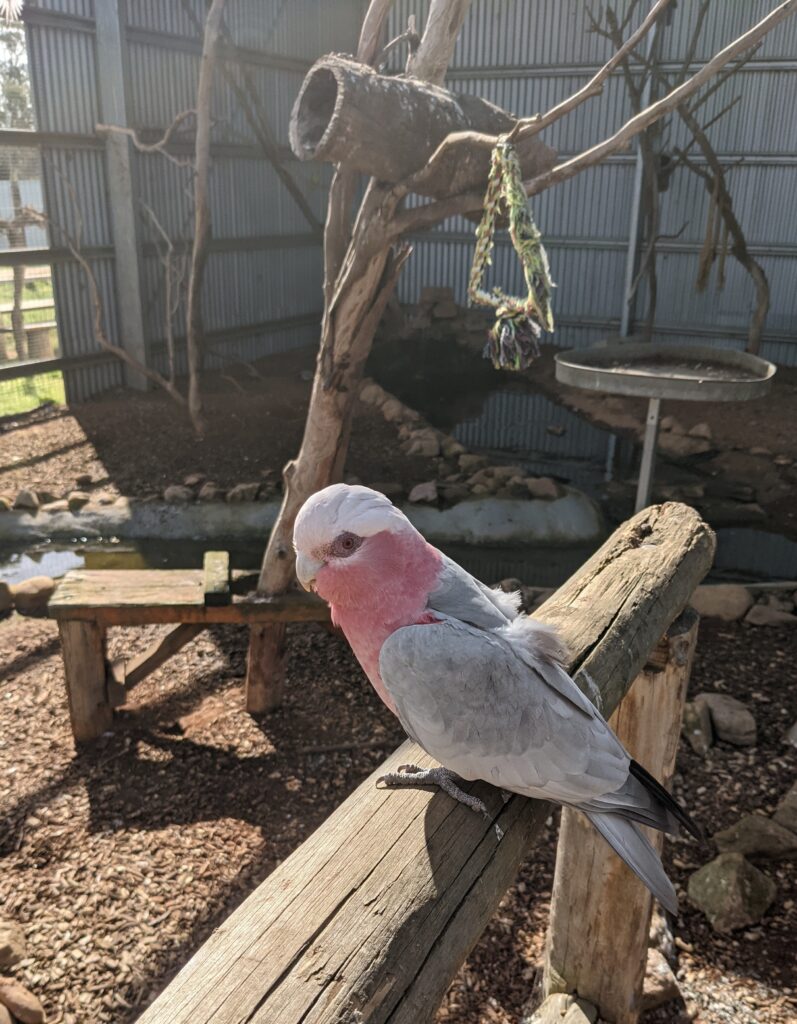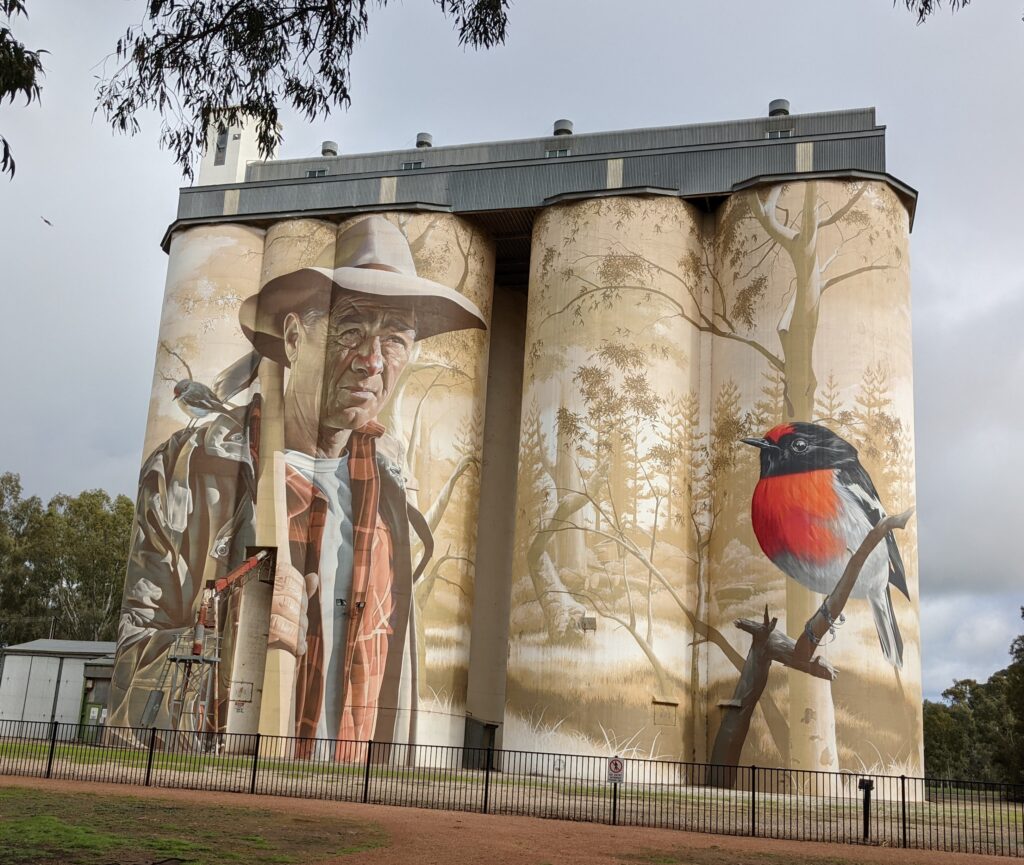A sunny day. A back road in McLaren Vale. A vast fig tree giving off a juicy scent of summer. An open air space tucked in among the grapevines. The view is sublime, the staff are terrific – cheerful and welcoming- and the wine is the stuff of dreams.
According to its website, Ekhidna Wines gets its name, not from our local monotreme, but from the Greek goddess Ekhidna, half nymph, half serpent: beautiful, immortal, fearsome. Our echidna was named after this Greek Myth because it is also something of a chimera: a warm blooded mammal that lays leathery eggs like a reptile. And the sign for the winery is not a terrifying Greek goddess but a stylized echidna with curly spikes ‘like a slinky’ and a long nose.
We are given a long table under the fan on the terrace. Through the huge picture windows, we see vines stretching away to the horizon. Out on the lawn, tables are set up under the gum trees. Armed with either a chilled glass of Ekhidna’s own ginger beer – which rated very highly with our connoisseurs of ginger beer – or a dry, watermelon pink rosé with a fruity lift from the Shiraz grape from whence it comes, we eagerly explore our options for lunch.
It’s a simple menu: four entrees, four main courses and four desserts. Perfect for sharing on a summer afternoon. This is a belated birthday celebration, and we are feeling happy and relaxed, if a trifle overheated.
Our entrées arrive, prettily presented, on wooden boards. We have chosen to share the whole selection, as we all enjoy the tapas approach to eating. Seeing ceviche on the menu gives me happy memories of a sumptuous ceviche in Palawan, where the Filipinos have adapted the South American recipe to mix calamansi with coconut milk, which takes the edge off the sour citrus and gives it a creamy softness. The Peruvian method uses straight citrus juice, so it needs to be added sparingly, or the tartness can be too sharp and – particularly with squid – risk ‘cooking’ it too much and turning it to rubber. However, it worked well with the sea trout, with snippets of fresh chilli providing an added zing.
The duck liver pâté is presented on homemade, thick, seeded biscuits. Decadently rich and creamy, I would have preferred plainer biscuits to dip lightly into a deep bowl of this luscious, ruinously calorific pâté, all the better to savour it. Nonetheless, it is a generous mouthful of flavour.
The calamari come three ways. As our daughter’s One & Only catches it fresh from the sea and cooks it superbly, there is always going to be a sense of competition when we order it elsewhere. However, the competition today is stiff. The best of the three types is charcoal grilled to perfection, with just the right amount of mild chewiness. The crumbed salt and pepper squid is not quite as good as Ben’s, but it gets a thumbs up, too. But those three thin strips of squid, pickled or cured in lemon juice, miss the mark, being overly tart and verging on rubbery.
Unfortunately, the beetroot tartare – a mound of grated beetroot too lightly spiced to taste of anything much and sprinkled in rice bubbles – is an uninspiring nod to vegetarian guests.
The main courses are generous and filling, but received mixed reviews: a chicken dish, steak, fish and – again a nod to the non-meat-eaters – a huge head of cauliflower in the middle of the plate, spiced with garlic chive miso mayo & sesame cabbage salad. We leave the cauliflower for the vegans, but order everything else.
My fish of the day – sea trout – is cooked beautifully, with a crisply crunchy skin and served on a bright green sea of fresh peas and pea puree. Roast pumpkin and a sprinkling of crunchy samphire complete this colourful picture, and it is the perfect dish for a warm, summer day.
The birthday girl loves her Angas eye fillet, served with roast spuds, cherry tomatoes and plenty of local olives, but, sadly, the chicken breast is dry and overcooked, its heap of corn salsa adding texture but very little flavour.
The desserts are a delight, however, and received rave reviews. We decide to share the two dessert platters: one consisting of all things chocolate and another of lemon flavoured morsels. A chocolate brownie wins a resounding 10 out of 10 from the tasters, and from the sidelines looked deliciously rich and moist. The chocolate ice cream also gets a round of applause. The white chocolate cup, a macadamia and white chocolate crunch and the chocolate rum ball disappear before I can evaluate them or gather an opinion, but I’m guessing the platter, all but licked clean, tells me all I need to know!
The lemon ensemble wins enthusiastic accolades too: a scoop of sweet and sour lemon sorbet cleans the palate nicely; the lemon curd is finger-lickin’ good, and goes well with a gobstopper sized lemon ball; the lemon sponge is moist and zesty. A lemon slice comes in a fierce shade of yellow, and the One & Only polishes it off.
But the stars of the show are -without the shadow of a doubt – the wines. And their creator, Matt Rechner. Matt is proud of his collection and obviously enjoys sharing his babies with his guests. I follow up the rosé with a crisp, fresh sparkling chardonnay – another good choice as we soak in the sun.
As we tuck in to our main courses, Matt begins a tasting for our Calamari King, starting with a full bodied, flavourful sparkling shiraz, concocted from five different vintages of his renowned Linchpin Shiraz.
This personable wine maker has had an eclectic career that has bought him full circle from Tatachilla Winery to California, the Barossa and back to McLaren Vale. His Ekhidna wine list is impressive, ranging from a small selection of lighter, whiter wines to a broad variety of bold reds, which includes one terrific sulphur free Shiraz.
The GSM – a favourite blend of mine – is 60% Grenache and 20% each of Shiraz, and Mourvèdre, beautifully combined to highlight its fruity, mouth-filling flavour, with glorious aromas of stone fruit and nutmeg.
Matt passes time and again to pour, evidently pleased with our enthusiasm. Later, he comes by with a map and a marker pen to provide a quick geology lesson on why McLaren Vale is the best wine growing region in the world.
Given the long tables and the sense of long, lazy lunches by the Mediterranean, appetites may be better served with a set menu of antipasti, pasta and steak. But this alluring wine is a siren call few could resist.


